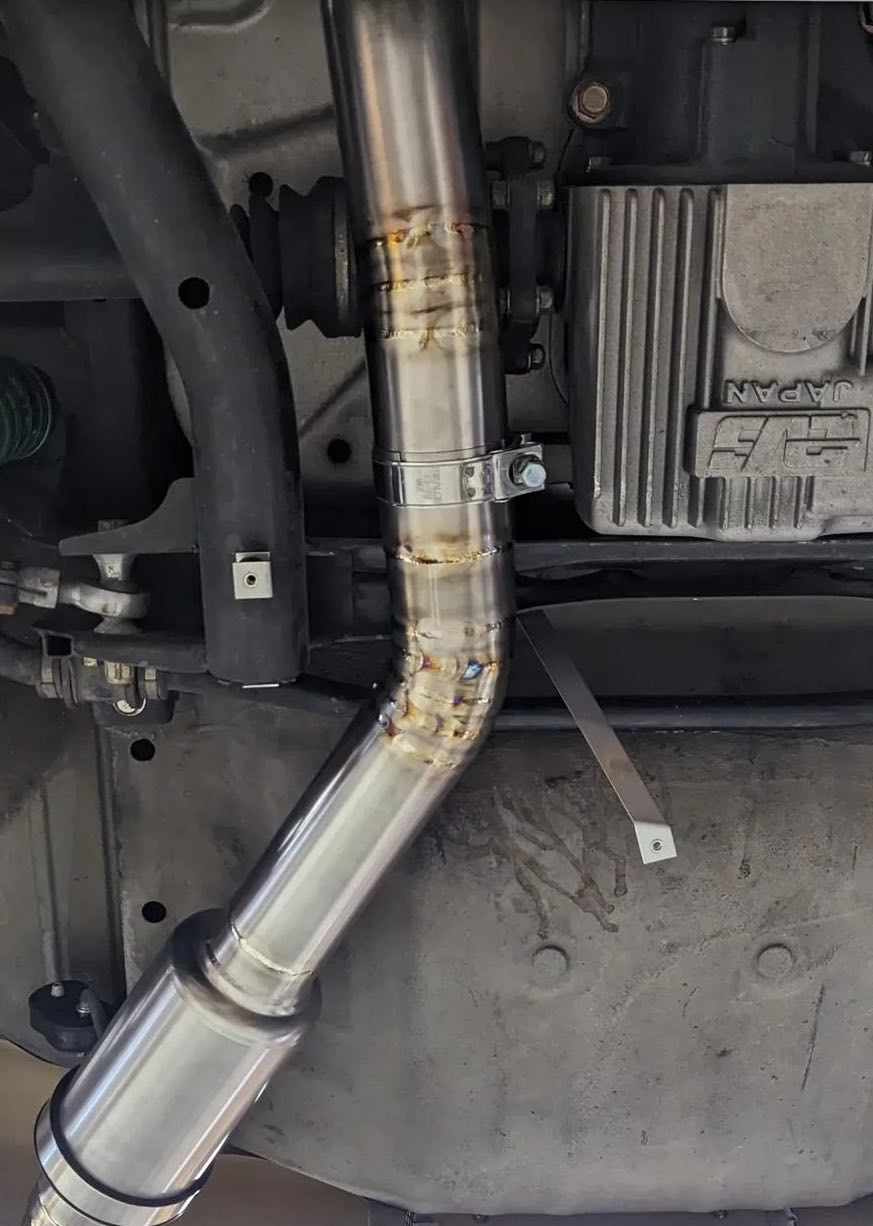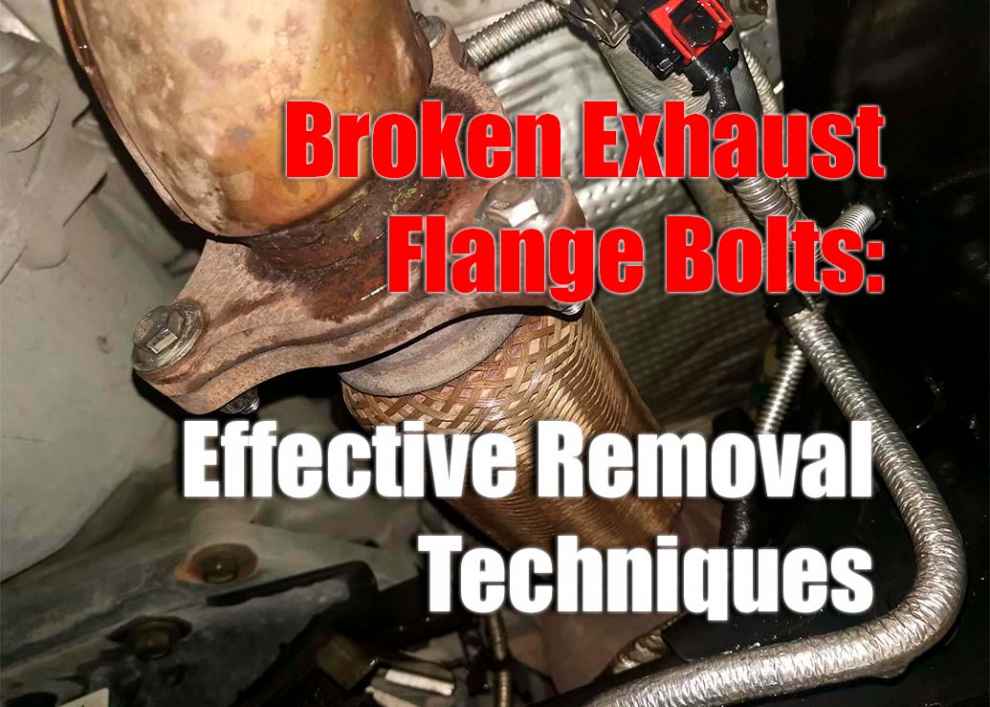Dealing with broken exhaust flange bolts can be a real headache. Broken exhaust flange bolts not only result in leaks but also affect your engine performance. Fixing the broken bolts in your car’s exhaust system is crucial. Whether you have experience working with car parts or not, removing broken exhaust flange bolts is something you can tackle with the right tools and techniques. From using heat to loosen stubborn bolts to employing specialized extraction tools, we’ll cover all the necessary steps to get the job done. So, if you’re tired of dealing with leaks and poor engine performance due to broken exhaust flange bolts, read on for some helpful tips and tricks.
Understanding Broken Exhaust Flange Bolts
Broken exhaust flange bolts are common, especially in older vehicles or those exposed to extreme conditions. The exhaust flange bolts are super important because they keep the exhaust manifold connected to the rest of the system. However, corrosion, heat cycles, or over-tightening can lead to bolt failure.
-
Corrosion: Over time, when these bolts are exposed to moisture, road salt, and other stuff in the environment, they can get rusty and weak and can break more easily when there is pressure on them.
-
Heat Cycles: The constant heating and cooling of the exhaust system during operation can cause the expansion and contraction of metal components. This repeated thermal stress can weaken the bolts over time, making them prone to snapping.
-
Over-Tightening: Excessive torque puts unnecessary strain on the bolts, increasing their risk of snapping. Following manufacturer guidelines or consulting a professional mechanic when tightening exhaust flange bolts is important to avoid this issue.
Signs of Broken Exhaust Flange Bolts

Addressing Broken Exhaust Flange Bolts
If you encounter broken bolts on your exhaust flange, there are several ways to fix the issue. Replacing the broken bolts with new ones may solve the problem. It’s essential to use high-quality bolts designed explicitly for exhaust applications. If the flange is damaged or multiple bolts have broken, welding may be necessary. A flux core welder can be used to secure the connection between the manifold and exhaust system. If you’re unsure how to address broken exhaust flange bolts or multiple repairs have been attempted without success, it’s best to consult a professional mechanic. Also read here about Best Exhaust System for Jeep Wrangler.
Methods for Removing Broken Exhaust Flange Bolts
There are several effective methods you can employ to tackle this problem head-on. Here are a few methods you can use to take out those pesky broken exhaust flange bolts.
-
Two-Nuts Method: This technique involves using two nuts tightened against each other on a threaded bolt to create leverage for removal. By securely gripping the remaining portion of the broken bolt, you can loosen and extract it from its position. It’s a simple yet effective way to tackle this issue.
-
Drilling the Broken Bolt Out of the Head: When faced with stubborn or rusted-on broken bolts, drilling them out may be necessary. Start by center-punching a mark at the center of the bolt head to ensure accurate drilling. Next, select a drill bit of the right size to make a pilot hole in the middle of the bolt head. Gradually increase drill bit size until reaching a diameter that allows easy extraction without damaging surrounding components. Once drilled through completely, use an extractor tool or pliers to remove what remains of the broken bolt.
-
Easy-Out Method: Another method is also known as a screw extractor. This special tool is made just for this job. Start by drilling a small hole in the middle of the broken bolt using the right-sized drill bit. Then, insert the easy-out into the pilot hole and turn it counterclockwise to grip the bolt securely. Apply steady pressure while turning the easy-out counterclockwise to extract the broken bolt from its position.
-
The Torx Bit Trick: If you’re dealing with stripped or damaged heads on broken exhaust flange bolts, consider trying out the Torx bit trick. One way to deal with broken exhaust flange bolts is by using a Torx bit that is slightly bigger than the size of the broken bolt head. Place the Torx bit into the center of the broken bolt head and tap it gently with a hammer until it bites into place. Slowly turn counterclockwise with a wrench or ratchet while applying steady pressure to remove the broken bolt.
-
The “It Can’t Be Tight if it’s Liquid” Method: Applying penetrating oil or rust dissolver can significantly aid in removing seized or corroded bolts. Spray or apply liberal amounts of penetrating oil around and onto the broken exhaust flange bolt. Allow sufficient time for the oil to penetrate and break down rust and corrosion before attempting removal.
Conclusion
Congratulations! You’ve now understood the broken exhaust flange bolts and learned various removal methods. With this knowledge, you’re well-equipped to tackle the challenge head-on and quickly get your vehicle back on the road. Now that you’re ready to tackle those broken exhaust flange bolts, go ahead and give it a shot! Remember, practice makes perfect, so don’t get discouraged if it takes a few attempts to master the technique. With determination and the right tools, you’ll soon have those stubborn bolts loosened or removed entirely.

Add Comment